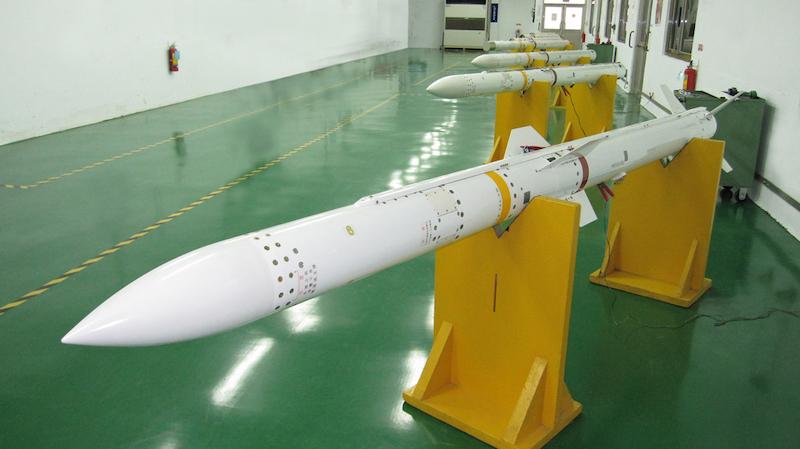In a groundbreaking leap towards strengthening its aerial supremacy, Taiwan’s National Chung-Shan Institute of Science and Technology (NCSIST) proudly introduces the Tien Chien V (Sky Sword V), an innovative beyond-visual-range air-to-air missile system set to redefine the nation’s combat capabilities. Through the integration of extended range, cutting-edge technologies, and enhanced anti-jamming features, the Tien Chien V missile marks a pivotal advancement in Taiwan’s defense prowess. With a projected range of 160km, the Tien Chien V missile positions itself as a formidable contender to the renowned US-made AIM-120C-8. The Taipei Times revealed that this ambitious initiative builds upon the established foundation of the Tien Chien II medium-range air-to-air missile. By leveraging the successes of its predecessor, the Tien Chien V aims to establish new benchmarks in aerial engagement and combat effectiveness.
The Tien Chien II, already a proven medium-range air-to-air missile within Taiwan’s defense arsenal, has set the stage for the Tien Chien V’s development. This evolution signifies a commitment to innovation while capitalizing on successful platforms. With a delicate balance between agility and firepower, the Tien Chien II’s legacy lays the groundwork for the Tien Chien V’s forthcoming capabilities. Central to the Tien Chien V’s design philosophy is its seamless integration with domestically manufactured joint helmet-mounted cueing systems. This fusion, combined with heightened anti-jamming capabilities, promises to accelerate target acquisition speeds, empowering pilots to adeptly counter adversary electronic warfare tactics. By equipping the Tien Chien V with these cutting-edge attributes, the Chungshan Institute anticipates equipping Taiwan’s air force with a distinct advantage in modern aerial warfare scenarios.
The forthcoming Tien Chien V missile aligns seamlessly with the operational requirements and design parameters of next-generation fighter jets. As internal weapons bays become imperative for stealth capabilities, the Tien Chien V naturally complements these advanced aerial platforms. This missile’s evolution underscores Taiwan’s resolute commitment to arming its armed forces with state-of-the-art technologies that align with the dynamic demands of contemporary military strategies. As the project unfolds, speculation abounds regarding the potential inclusion of vector thrust and advanced avionics. The incorporation of features such as active electronically scanned array radar and a tactical data link introduces tantalizing possibilities. While decisions on these capabilities remain pending, their contemplation underscores the institute’s commitment to maintaining a technological edge in the fiercely competitive realm of military aviation.
The Chungshan Institute’s storied legacy in missile development is epitomized by the Tien Chien series. Notably, the Tien Chien I short-range air-to-air missile and the Tien Chien II demonstrate the versatility and adaptability of these indigenous missile systems. It is worth noting that the nomenclature’s leap from Tien Chien II to Tien Chien V illustrates the institute’s dedicated transition towards the imminent Tien Chien V, showcasing Taiwan’s unyielding resolve to technological advancement and strategic preparedness on the aerial battlefield.
The introduction of the Tien Chien V missile system is a watershed moment for Taiwan’s defense capabilities. As the nation’s aerospace landscape continues to evolve, this development stands as a testament to Taiwan’s unwavering commitment to technological innovation and strategic readiness in an ever-evolving aerial arena.















